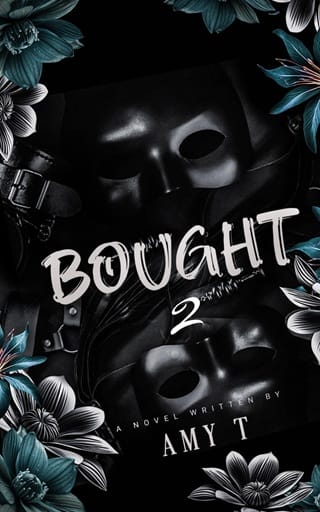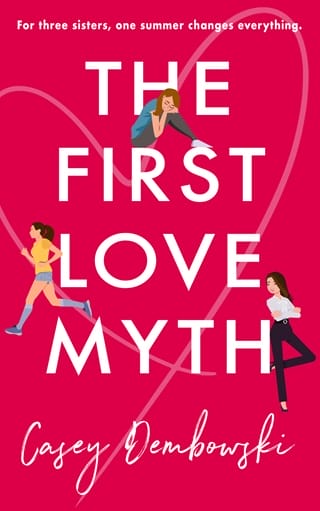Chapter 32
Friday, April 19
Holly wakes up early and slips out of bed, grateful that Aaron is such a heavy sleeper. Her mind is made up, and she doesn’t want to give him an opportunity to change it. She grabs her clothes and steals downstairs, hoping that Graham isn’t lying in wait for her again.
All is quiet on the main floor, and she’s relieved to make it out to her car without incident.
Though Holly has begun to question her own judgment of late, she recognizes that she desperately needs distraction. Something to shield herself from any more guilt or self-blame—and sadness—over two lives cut brutally short. Such a waste.
Holly is also desperate to regain some control. For too long now, she has merely reacted to each mounting catastrophe without a plan or strategy. She needs to follow the advice she would give any of her clients in a similar predicament: Be proactive. Advocate for yourself.
As soon as she gets into her car, Holly calls the Newport Beach Police. Once she explains who she is and how she’s connected to the victim, she gets an appointment straightaway for an interview with the detective attached to JJ’s case.
Within minutes of checking in at the Newport Beach police station’s main desk, Holly is greeted by a thirtyish Black man in a well-cut gray suit who introduces himself as Detective Rivers and leads her into a small interview room. Having lived in Southern California for her whole life, Holly is used to meeting aspiring models and actors who work in the service industry. She almost expects to be served by gorgeous baristas and servers. But not cops. With piercing almond-brown eyes, chiseled cheeks, and flawless complexion, Detective Rivers is distractingly good-looking. She also can’t help noticing that he doesn’t wear a wedding band.
He leans an elbow on the desk that separates them as he scribbles in a notebook. “How long were you Ms. Jang’s psychiatrist, Dr. Danvers?”
“A little over three months,” Holly says. “But that’s not how I would’ve described our professional relationship.”
“You’re not a psychiatrist?”
“I am, yes.” Holly hesitates, still not entirely comfortable where to draw the lines of patient-therapist confidentiality when it comes to the dead. “But with JJ—Ms. Jang—I was treating her specifically for addiction.”
“Addiction to?”
She hesitates. “Alcohol.”
As the detective jots down another note, Holly notices that his expensive-looking pen is the same color as his suit.
“But JJ had been sober for the past two months,” she adds.
His pen stills. “Sober? Are you sure?”
“Yes. Why?”
“We won’t have the toxicology report back for a few days, but we found two empty bottles on her kitchen counter. One vodka, the other wine.”
The words hit her like a slap. “JJ was drinking again?”
“We can’t know for sure without blood tests,” he says, though his eyes show little doubt.
Holly feels ashamed—as if she had failed JJ, as if she were the one who had downed the bottles—but refuses to let it deter her. “Are you certain she jumped, Detective?”
“No. I’m not certain of anything yet. Why do you ask, Dr. Danvers?”
“I just… Did she happen to leave a suicide note?”
“No. But more often than not, victims don’t. Especially when alcohol is involved.” Rivers lifts his pen off the page. “I don’t need to tell you, Dr. Danvers, that suicide tends to be a more impulsive decision among the intoxicated.”
She knows he’s right, but it doesn’t diminish her doubt. “Have you ruled out foul play?”
“We haven’t ruled anything out.” He angles his head slightly. “But it sounds to me like you have suspicions of your own.”
Holly considers her words carefully. “JJ is the second death in my practice in the past few weeks.”
“Second?” His eyelids flicker, but his expression is unchanged. “Who was the first?”
“Elaine Golding.”
He jots down the name. “The activist who overdosed in Laguna?”
Holly nods. “I’m not convinced her overdose was accidental.”
“Why not?”
“To begin with, Elaine always used oral opioids. Percocet and Vicodin, mainly. Never fentanyl. Which is what killed her.”
“Isn’t it common for users to cross over to other opioids?”
“Yes, but Elaine never had before. Besides, even if she did decide to try fentanyl, she could have smoked it instead of injecting.”
“Can’t someone overdose smoking fentanyl just as easily as injecting?”
“Sure. But Elaine had a severe needle phobia. I’d given her IV medications before, and she was terrified. It’s hard for me to imagine her being able to inject herself.”
“Hmm,” Rivers mutters as he writes more notes. “You think the two deaths in your practice are connected then?”
She shrugs. “I have no idea what to think. But it would be quite the coincidence if they aren’t.”
His gaze is indecipherable. “Did Ms. Golding know Ms. Jang?”
Holly hesitates. “They were in group therapy together.”
His eyes widen momentarily. “How many others in this group?”
“Five.”
“Can you tell me their names?”
She holds up a palm. “No. That would be a betrayal of the other clients’ confidentiality. I only told you about JJ and Elaine because… they’re gone.”
“All right. Can you tell me more about the purpose of the group? Were you treating all the members for addiction?”
“Yes. But for different types. For Elaine it was opioids, JJ alcohol. Others in the group have varying types of addictions.”
The detective studies her for a few unnerving seconds. “You’re the therapist who treated Simon Lowry, aren’t you? I read something about that. He’s one of my dad’s favorites.”
She doesn’t see any point in concealing what is already public knowledge, so she nods.
“Was he in the same group as Ms. Jang?” he asks.
“I can’t comment on that.”
“He was getting psychedelics as part of his treatment, wasn’t he? He said as much in that interview. Ketamine, right?”
“Yes.”
“Can I assume Ms. Jang was also being treated with ketamine?”
“Yes,” she says, knowing it will probably show up on JJ’s toxicology testing.
The detective scratches more notes. “Is there any known association between ketamine and suicide, Dr. Danvers?”
“Yes, but in the reverse sense,” she says. “Ketamine is one of the only medications proven to lower someone’s risk of suicide. Even after a single dose.”
“OK. Aside from the two victims being in the same group, what else makes you think their deaths might be related?”
Holly tells him how JJ admitted to speaking to Elaine on the night of her overdose and how she felt responsible for not sharing some kind of warning with her.
“Warning? Ms. Jang used that specific word?”
“No. I inferred it. JJ said she should have told Elaine something. But to me, it sounded as if she felt guilty for not warning Elaine about something.”
“What?”
“I have no idea.”
“All right.” But his expression is doubtful.
Holly sighs. “Look. JJ had no history of previous suicide attempts. Or even depression. In my judgment, her jumping off the balcony… it just doesn’t fit.”
Detective Rivers lowers his pen. “We’ll have to wait for the medical examiner’s report and the toxicology results. Meantime, I’ll liaise with the detectives in Laguna Beach who investigated Ms. Golding’s death. But I can tell you this much: there was no evidence of a struggle found at the scene.”
Holly feels deflated, but she’s not ready to concede. “Let’s say, hypothetically, that JJ didn’t choose to jump and someone pushed her…”
“Go on.”
“Would you always expect to see signs of a struggle if, say, she trusted the other person?”
“Not necessarily. No.” His smile is almost apologetic. “I’ll look into everything you’ve told me today, Dr. Danvers. If anything turns up, we’ll absolutely pursue it. But it’s more likely than not these deaths are just a tragic coincidence.” His smile fades. “Or, at least, not murder.”
 Fullepub
Fullepub 



